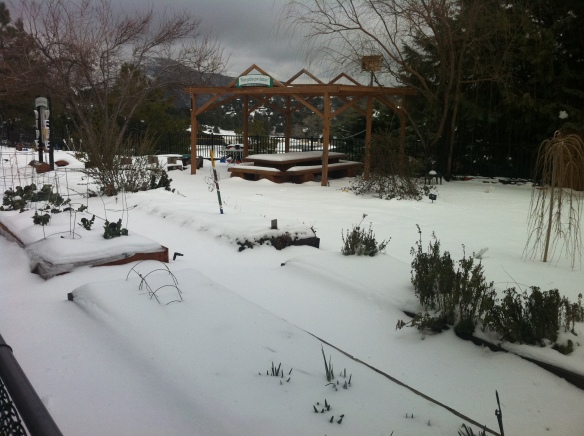Welcome back! School is officially back in session here at Julian Elementary, and we are looking forward to our best year yet in the school garden. (Thanks once again to the Sage Garden Project for funding! You folks are the very best!)
A few cool developments over the summer:
Our pioneer bed is exploding with veggies!
Emily finished up the signage for the native plant trail!
Emily also found an amazing volunteer to build a heavy-duty trellis for our grapes, creating a shady, whimsical tunnel for kids to walk through between the lunch tables and the playground.
In closing, I’d like to revisit the original objective was for this blog: to make a case for school gardens from every possible angle. Here’s yet another compelling reason for a school garden:
On the first day of school we have an orientation for parents new to the school. All of our administrators and program directors warmly welcome new families as we explain all of the resources we offer. I had a few minutes to talk about our garden, and at the end of the meeting, I invited parents to go out for a short tour.
As I was walking around with one of the new families, the mom told me that they had seen the garden on their first visit to the school months ago. They were won over by many things at our wonderful district but “it was seeing the school garden that finally convinced us that this was the place we wanted our kids to go to school.”































